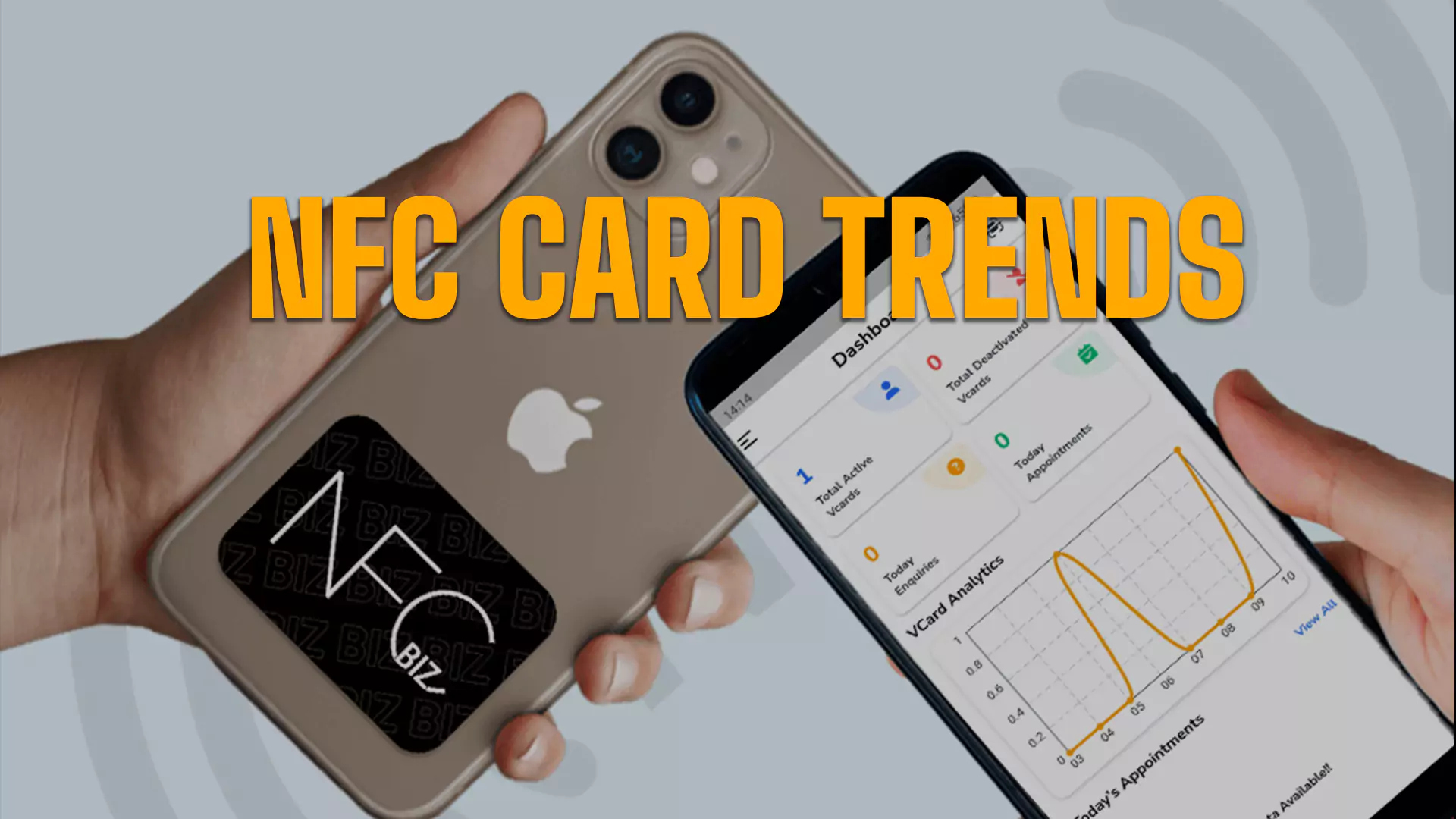NFC Card Trends

The assimilation of Near-Field Communication (NFC) technology into business cards is converting business connections. Business cards turn out to be more than just a means of switching over contact information when they support Near Field Communication (NFC). So that they become a dynamic element of digital networking.
Individuals can send their contact information straight to their contacts’ smartphones or tablets by just tapping an NFC-enabled card up to well-matched devices. As NFC business cards require a smooth experience and are easy to use, they are becoming more and more popular.
To ensure that their networking capabilities match those of their goods and services, companies use NFC business cards more frequently. The reason behind their expected considerable growth in the global market is that NFC business cards merge old-fashioned technology with predictable business practices.
NFC Card Trends
The following are the NFC card trends to look out for:
Market Growth and Projections
Momentous spreading in the NFC business card market is observed as a result of the growing preference for digital and contactless solutions in business interactions. A substantial increase in market size is predicted in the coming year, predicting trends toward technological integration in networking. As NFC business cards offer ease and efficiency, that’s the reason behind its growth. NFC business cards will push the market to new heights due to their functionalities as standard tools for professional exchanges and the widespread use of digital marketing. This clearly signifies the promising future for NFC technology in business environments.
Technological Innovations
NFC business cards suggest new integration of greater security features like encryption and biometrics, safeguarding that data transfers remain secure along programmability, which allows users to update their contact information remotely without needing new cards. Moreover, new innovations are being used to extend the durability and environmental sustainability of NFC cards. This makes these cards more usable across different devices and operating systems globally. These innovations broaden the scope of NFC technology in the business world, fostering greater connectivity and interaction as well as enhance users’ convenience and safety.
Impact of COVID-19 on NFC Usage
Adoption of NFC business cards expressively speeded during COVID-19 pandemic due to health issues that demand for contactless solutions in professional settings. At that time NFC business cards were used as an alternative for minimising physical contact and sharing contact details safely. This alteration plays a key role In converting various sectors into digital, which provide a solution to maintain business while keeping to health guidelines. This impetuses NFC technology in flattering integral in redefining networking standards as well as expanded traction as a wholesome option in post-pandemic world
Adoption in Different Industries
The ability to enhance both connectivity and security NFC business cards are quickly gaining a grip in various sectors like banking, healthcare, and retail. The purpose of these cards in banking is to provide secure transactions and immediate sharing of information, whereas in healthcare, they assist in smooth registration and access to the medical records of patients. On the other hand, in retail, it facilitates streamlined loyalty programs and fast checkouts to enhance the customer experience. This extensive implementation of NFC proves its resourcefulness in refining industry-specific interactions and processes while maintaining rigorous security standards.
Regional market insights
NFC technology adoption varies worldwide across different regions like North America, Europe, Asia-Pacific, Latin America, and Africa, which demonstrates its diverse economic, technological, and regulatory landscapes. These regions show remarkable growth, and adoption is gradually increasing with improvements in technology. Each region’s discrete tactic highlights the global potential and challenges of expanding NFC technology use.
Challenges and limitations
Along with the popularity and growth of NFC business cards, various challenges delay their adoption. The issues include privacy concerns, security issues, compatibility, and high cost. These challenges demand enduring developments in security measures, broader device support, and cost-effective solutions to ensure NFC cards can be safely and universally adopted across various sectors.
Conclusion
NFC cards offer a promising future due to their expected increase in integration with other digital tools and platforms, enhancing their functionality and user experience. The advancement in technology may lead to more secure and versatile NFC business cards, possibly integrating features like biometric verification. Due to environmental apprehensions, eco-friendly materials and maintainable production methods are likely to become more prevalent in their manufacturing. The spread of NFC technology in smartphones and other devices will also subsidise broader acceptance and use, making NFC business cards a necessary tool in professional networking.